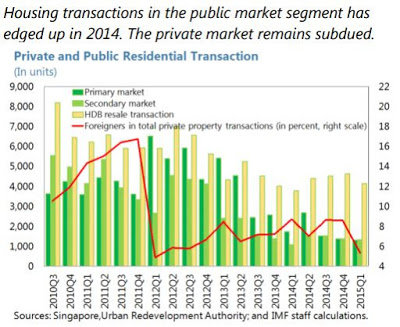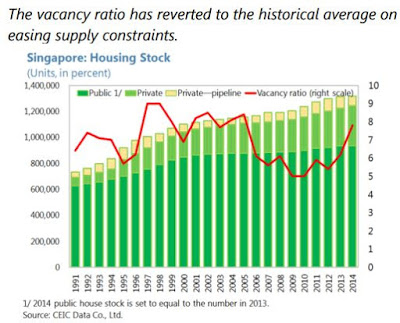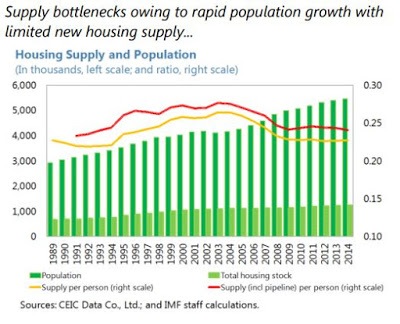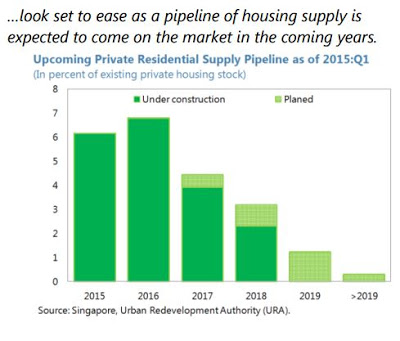Tuesday, August 4, 2015
House Prices in Singapore
“Recent macroprudential measures have contributed to smoothing the cycle for credit and house prices”, says IMF’s annual report on Singapore. More specifically, the report notes that “House prices have continued to decline modestly and are below their peaks by 9 percent and 6 percent in the public resale and private market segments as of the first quarter of 2015, respectively. The pace of house price decline has been slower over the past 7 quarters, suggesting that policy actions such as the introduction of the total debt service ratio (TDSR) framework in mid- 2013 have helped engineer the soft landing targeted by policy makers.”
Moreover, the report says that “A further measured decline in residential real estate prices seems likely. The large supply of new homes coming on the market in the next two years should alleviate supply pressures and the expected increase in interest rates will reduce demand, helping moderate prices and increasing affordability. Price adjustments to date have been modest and gradual, and robust demand for new housing projects suggests that the risk of disorderly adjustment in house prices is low. Therefore, core macroprudential measures such as the TDSR, ceilings on loan-to-value ratios and loan tenure limits should be maintained to prevent a buildup of excessive leverage that could lead to systemic risks. Other measures, for example stamp duties, could be relaxed to arrest potential adverse feedback loops between economic activity and financial conditions, without loosening banks’ lending standards. But this should only be done in case of signs of excessive house price declines, associated with clear evidence of a tightening of financial conditions.”
The housing market developments in six charts:
Posted by at 3:52 PM
Labels: Global Housing Watch
Subscribe to: Posts






